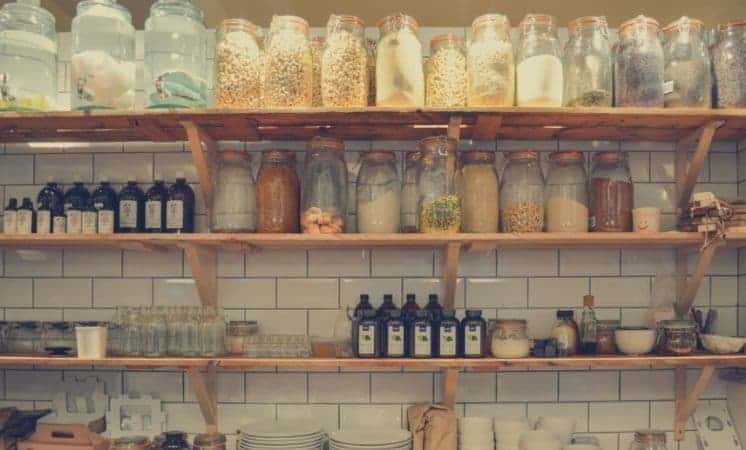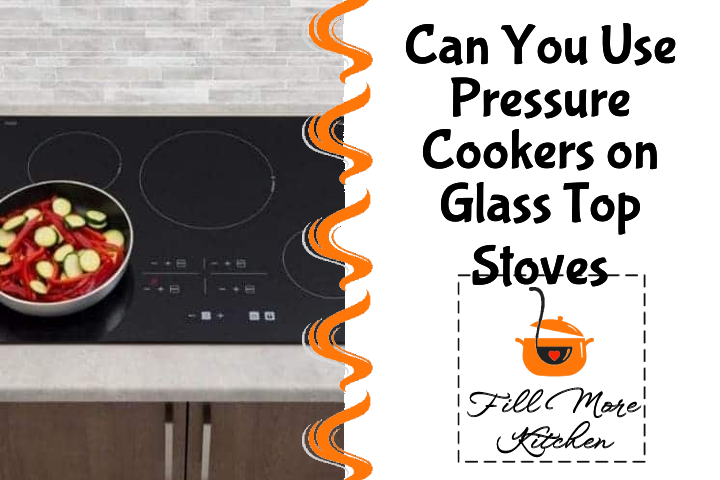Glass top stoves have gained popularity in recent years due to their modern appearance, ease of use, and efficient heating. Despite the absence of visible burner pans, these stoves offer better heating control and faster heat and cool-down times. However, it is important to determine whether pressure cookers can be used on glass top stoves.
Visualize placing a large stainless-steel pressure cooker on your glass top stove and allowing it to heat up to 250 degrees Fahrenheit. This action should make you feel uneasy because heavy cookware can be hazardous on the smooth glass surface, and there is a possibility that the weight could cause the glass to crack, or at least that’s what many individuals believe.
If you have a glass top stove and are wondering whether you can use pressure cookers on it, the answer is yes. However, it is important to note that if you decide to do so, you must be aware of the proper usage techniques, have a good understanding of how your glass top stove operates, and know the amount of pressure and weight that your stove can handle.
How To Use Your Pressure Cooker on a Glass Stove Top?
- It is important to complete all pre-cooking tasks, such as sautéing vegetables and browning meat ingredients, in a conventional pot on the stove before using a pressure cooker on a glass top stove.
- After pre-cooking, allow the stovetop to cool down and clean it if necessary before putting your stainless-steel pressure cooker on it. Add the required amount of liquid and place your food inside.
Lock your pressure cooker lid onto the pot, ensuring it is in the correct position to securely lock or use a switch to manually lock it, referring to the manual for precise guidance.
- Adjust the pressure release valve to the closed position, allowing pressure to accumulate, and it will automatically open and release pressure as required.
- Adjust the heat to medium or high based on the required pressure for cooking your food, and if you observe steam escaping from the top vents of your pressure cooker, it indicates that you are on the right track, so don’t worry if there is any condensation.
- Once the pressure indicator pops up, adjust the heat to a lower setting on your glass top stove, but be aware that finding the appropriate reduced setting may require some experimentation. It’s important to note that glass top stoves tend to decrease their heat rapidly, so transitioning from high or medium to low may result in too much of a reduction and necessitate an intermediary setting.
- From now on, keep an eye on your pressure cooker. In case the pressure indicator decreases, it means that the heat is not sufficient. On the other hand, if you hear sputtering or whistling from the pressure indicator, it indicates that the heat is too high.
- When using a pressure cooker on a glass top stove, it is important to select the appropriate pressure release method depending on the type of food being cooked and the specific pressure cooker model; ideally, allowing for natural release over a period of 15-20 minutes is the safest option.
- After the pressure indicator has decreased, it is safe to uncover the pressure cooker.
It is important to note that if you do not observe any steam escaping from the valve or vents and your pressure gauge has not changed for five minutes during the pressure building phase, you should inspect your lid.
If you need to reset the pressure cooker, take it off the glass top stove and open the lid in a direction away from you. It is important to avoid dragging the pressure cooker on the cooktop.
How Much Weight Can a Glass Stove Top Take?
When using a glass top stove, it is important to avoid placing heavy objects on it as this can lead to cracking and the need for replacement of the entire stovetop; therefore, it is recommended that you refrain from storing any weighty items above the stove to prevent potential damage caused by dropping or falling onto its surface.
Moreover, if a heavy pressure cooker is left on a glass top stove for an extended period, it can potentially weaken the glass. Additionally, dragging a full pot across the surface of the stove due to inability to lift it may result in scratches on the range’s surface.
Glass top stoves can typically handle around 45-50 pounds of weight, which is why many suggest using hot plates or propane burners for canning on these stoves. More details on this topic will be discussed in the following section.
Can You Pressure Can on a Glass Stove Top?

Using pressure cookers on glass top stoves is not recommended, and there are several reasons for this.
- Pressure cookers typically have a concave bottom that can create a tight seal with the glass top stove, and attempting to lift the cooker off the stove may result in damaging the stove if the seal is too strong.
- If the weight of a full canning pot exceeds the capacity of your glass top stove, even if it has a flat bottom, it may cause damage to your stove such as breakage or cracking.
- Glass top stoves have a cycling heat system that prevents a steady boil, making it unsafe to use them for canning as the high levels of heat required for sterilization cannot be achieved.
- Pressure cookers designed for burners may not be suitable for glass top stoves as they are often too wide and can reflect heat onto the glass, leading to metal fusion, cracking, burning, and discoloration.
- Glass top stoves often have safety features that turn off the heat if it gets too high, which can disrupt your canning process and render your food under-processed and unusable.
Opt for an electric burner, a gas stove, an outdoor propane burner, or a standalone electric canner instead of using pressure cookers on glass top stoves.
What Should You Not Use on a Glass Top Stove?
Cookware
- Do not utilize cookware with a curved bottom as it can cause the glass top to crack due to improved heat transfer.
- Avoid using cookware made of glass, cast iron, porcelain, enamel, stoneware, and ceramic on your glass top stove as they can cause scratches on the surface. When exposed to high heat, cast iron can absorb and transfer it back to the cooktop, leading to cracking or even shutting off the burner. Additionally, rough patches on cast iron can also scratch the stovetop.
- Avoid leaving any debris on the bottom of your cookware as it can melt onto your glass stovetop and cause stains if not cleaned properly before use.
- Avoid dragging your cookware on the glass top stove as it may cause permanent marks, particularly when using aluminum or copper materials.
- When cooking, it is advisable to refrain from putting any cookware utensils on the glass top stove as they can cause burns or leave marks.
- Avoid putting glass baking dishes directly on your glass top stove right after removing them from the oven, as the excessive heat can lead to cracking of the stovetop.
Cleaning Methods
- Avoid using cleaning products containing ammonia on glass top stoves as they can cause streaks; instead, opt for white vinegar. Additionally, refrain from using abrasive cleaners and tools to prevent microscopic scratches on the surface.
- Avoid using abrasive sponges, steel wool, or cleaning products on the glass top stove when it is still hot.
- Avoid putting pressure on the glass top stove while cleaning as it may lead to cracking.
When cooking with sugary or starchy foods on a glass top stove, it is important to prevent spillage as cleaning up cooked-on food from the stove can be difficult.
After applying white vinegar to loosen the food, use a specialized scouring tool at a forty-five-degree angle to remove it.
You can also check this video about “Can You Use Pressure Cookers on Glass Top Stoves?”
Check out our 10 reviews!
Related posts
https://fillmorekitchen.com/your-meat-grinder-can-be-used-for-more-than-you-think-you-need-to-try-this/
https://fillmorekitchen.com/why-your-dishwasher-makes-strange-noises-how-to-fix/
https://fillmorekitchen.com/why-your-oven-display-says-dr-what-to-do/
https://fillmorekitchen.com/can-you-stop-and-restart-a-slow-cooker/
https://fillmorekitchen.com/should-you-clean-an-oven-before-first-use/



